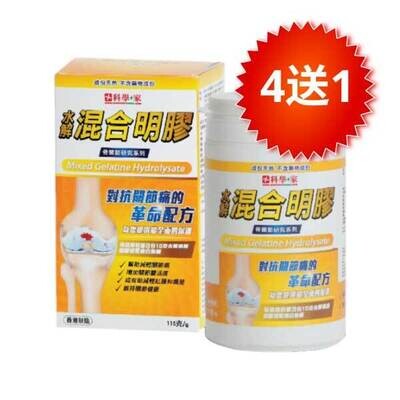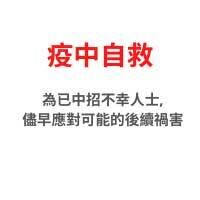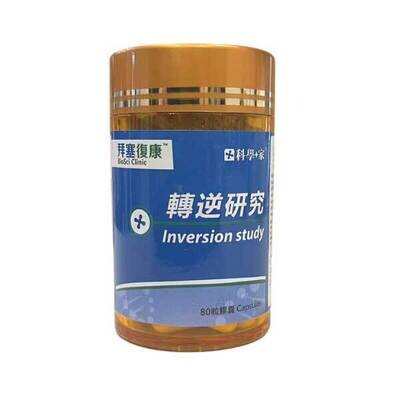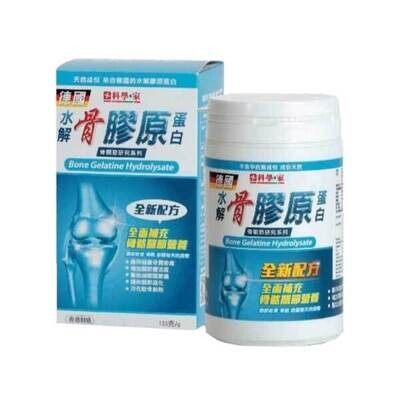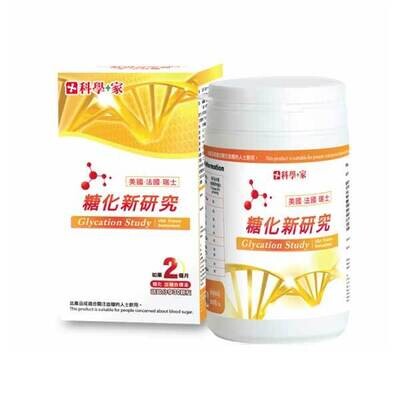科學+家 嘌呤研究 | SCIENTIST HOME PS Mulberry Kohki
此外,許多痛風患者繼續經歷反復痛風發作 (2,3)。痛風發作常被歸因於觸發事件,如高嘌呤食物攝入,避免這些觸發因素被廣泛地作為治療痛風的中心策略。儘管這些策略被廣泛採用,嘌呤攝入導致痛風復發的風險仍然未知。
嘌呤攝入與高尿酸血症 (4) 和痛風發作風險新增有關 (5)。雖然眾所周知,嘌呤攝入會引發痛風發作,但迄今為止,沒有研究檢測富含嘌呤的食物攝入是否會在短時間內引發反復痛風發作。
研究結果表明,避免或減少攝入富含嘌呤的食物,尤其是動物源性食物,可能有助於降低痛風發作的風險 (6)。
相關風險包括:
- 高血壓 (7)
- 2型糖尿病 (8)
- 慢性腎病 (9)
- 關節破壞 (10)
科學+家 嘌呤研究
可能適合多學科復康調理:
- 尿酸的產生 (17)
- 高尿酸血症 (18)
- 助降低血清尿酸 (19)
- 黃嘌呤氧化酶 (21)
- 腎臟炎症和纖維化 (22)
- 尿酸單鈉 (23)
飲用方法: 每天二至三次,每次一平量匙,餐後飲用,以溫開水衝開(不可用热水),即可飲用。
建議:
- 試一個月。如果沒有積極的進展,你可以停止服用並尋求其他醫療建議。
- 如果觀察到積極的進展,你可以繼續3至12個月的課程,視個人情况而定。
- 在達到滿意的效果後,可停止天服。
- 為了獲得更好的效果,建議配合食用結晶研究,水解混合明膠及外塗結晶研究霜劑以緩解痛風的影響。
- 復康是漸進的。驗血、X光片或核磁共振可以作為參考。
溫馨提醒:
- 减少高嘌呤食物和饮料。
- 多喝水,即每天2000-2500毫升,以促進新陳代謝。
注意:
- 本品為營養補充劑,不用於替代藥物。
- 不適合飲用本補充劑包括:
- 懷孕
- 嬰幼兒
- 如果出現過敏或不良反應,請停止服用。
- 如不瞭解問題原因或問題持續,請儘快諮詢醫生。
成分:黃酮類化合物、桑葉提取物、紫薯提取物、黃杞葉、桑皮甘、芒果苷、巴西芸香、芸香苷、槲皮素、花青素。
規格型號:231克一瓶
份量:15至23天
儲存:請存放於陰涼乾爽處,避免陽光照射
產地:中國香港
如你有任何疾病, 請遵照閣下醫生的完整醫療方案; 而是否使用多學科復康方案前, 你必須咨詢主診醫生的意見, 如果閣下的主診醫生不建議您加入補充劑調理組合, 請你不要使用。如果你需要尋求其他醫生作第二咨詢, 閣下可聯絡我們線上<無邊界醫生>或你自己城市內的其他專業醫生的再診斷。
__
High Uric Acid & Gout
Gout is an inflammatory arthritis associated with hyperuricemia that is triggered by the crystallization of uric acid within the joints. Gout leads to substantial morbidity by causing severe pain. Although the causes have been identified with treatments available, the prevalence of gout and hyperuricemia continue to be substantial (1).
Gout attack can be recurrent (2,3), often attributable to triggering factors such as high purine food intake. Hence, avoiding high purine food is one the strategies being used in gout management. However, the risk of gout recurrence with purine intake remains unknown.
Purine intake is associated with increased risk of hyperuricemia (4) and gout attacks (5). However, to date no studies have examined whether purine-rich food intake triggers recurrent gout attacks within a short period of time.
Study findings suggest that avoiding or reducing amount of purine-rich foods intake, especially of animal origin, may help reduce the risk of gout attacks (6).
- Hypertension (7)
- Type 2 diabetes (8)
- Kidney health (9)
- Joint degradation (10)
SCIENTIST HOME PS Mulberry With Kohki
Suggested multidisciplinary rehabilitation:
- Uric acid production (17)
- Hyperuricemia (18)
- Helps to lower serum uric acid (19)
- Xanthine oxidase (21)
- Kidney inflammation and fibrosis (22)
- Monosodium urate crystals formation (23)
Consumption: 2 to 3 times a day, 1 teaspoon each time, to be taken after meal. Dissolve in 250 ml of water (avoid hot water).
Recommendation:
- Try for 1 month. If there is no positive progress, you may stop taking and seek medical advice.
- If positive progress is observed, suggest to continue for 3 to 12 months, depending on individual condition.
- Upon attaining satisfactory results, may stop taking.
- To help ease gouty condition, suggest to take Crystallized Study and Mixed Gelatine Hydrolysate as well as apply Crystallized Study Cream.
- Recovery should be progressive. Blood test, X-ray or MRI is good for reference.
Gentle Reminder:
- Reduce/avoid intake of high purine food and drinks.
- Drink more water i.e. 2000-2500 ml per day to facilitate metabolism.
Caution:
- This product is a nutritional supplement, and cannot replace medicine.
- Do not take this supplement if:
- Pregnant or breastfeeding.
- Infants and young children.
- To stop taking if allergic or adverse reactions occur (other than the normal healing reactions listed above).
- If you do not understand the cause of your health condition or the issue persists, please consult your doctor as soon as possible.
Ingredients: Mulberry Leaf, Purple Sweet Potato, Kohki Leaf, Indian Mango, Dimorphandra Mollis.
Specification: 231g per bottle
Serving size: 10 to 23 days
Storage: Store in a cool and dry place, away from sunlight
Origin: Hong Kong, China
If you have a medical condition, please follow your doctor's medical treatment plan. Do consult your medical doctor before using the Multidisciplinary Rehabilitation Program (MRP). Please do not proceed if your medical doctor does not recommend the use of our MRP. If you'd like to seek a second opinion from other doctors, you may contact our online "Doctors Without Border", or other professional doctors at your convenience.
__
參考研究 / Ref:
1. Zhu Y, Pandya BJ, Choi HK. Prevalence of gout and hyperuricemia in the US general population: the National Health and Nutrition Examination Survey 2007-2008. Arthritis Rheum. 2011 Oct;63(10):3136-41. doi: 10.1002/art.30520. PMID: 21800283.
2. Gutman AB. The past four decades of progress in the knowledge of gout, with an assessment of the present status. Arthritis Rheum. 1973 Jul-Aug;16(4):431-45. doi: 10.1002/art.1780160402. PMID: 4147308.
3. Neogi T, Hunter DJ, Chaisson CE, Allensworth-Davies D, Zhang Y. Frequency and predictors of inappropriate management of recurrent gout attacks in a longitudinal study. J Rheumatol. 2006 Jan;33(1):104-9. Epub 2005 Nov 1. PMID: 16267879.
4. Choi HK, Liu S, Curhan G. Intake of purine-rich foods, protein, and dairy products and relationship to serum levels of uric acid: the Third National Health and Nutrition Examination Survey. Arthritis Rheum. 2005 Jan;52(1):283-9. doi: 10.1002/art.20761. PMID: 15641075.
5. Choi HK, Atkinson K, Karlson EW, Willett W, Curhan G. Purine-rich foods, dairy and protein intake, and the risk of gout in men. N Engl J Med. 2004 Mar 11;350(11):1093-103. doi: 10.1056/NEJMoa035700. PMID: 15014182.
6. Zhang Y, Chen C, Choi H, et al. Purine-rich foods intake and recurrent gout attacks. Ann Rheum Dis. 2012;71(9):1448-1453. doi:10.1136/annrheumdis-2011-201215
7. Grayson PC, Kim SY, LaValley M, Choi HK. Hyperuricemia and incident hypertension: a systematic review and meta-analysis. Arthritis Care Res (Hoboken). 2011;63:102–10.
8. Zhu Y, Pandya BJ, Choi HK. Comorbidities of gout and hyperuricemia in the US general population: NHANES 2007–2008. Am J Med. 2012;125:679–87.
9. Kawashima M, Wada K, Ohta H, Terawaki H, Aizawa Y. Association between asymptomatic hyperuricemia and new-onset chronic kidney disease in Japanese male workers: a long-term retrospective cohort study. BMC Nephrol. 2011;12:31. doi:10.1186/1471-2369-12-31.
10. Richette P, Perez-Ruiz F, Doherty M, Jansen TL, Nuki G, Pascual E, et al. Improving cardiovascular and renal outcomes in gout: what should we target? Nat Rev Rheumatol. 2014;. doi:10.1038/nrrheum.2014.124.
11. Yu Z, Fong WP, Cheng CH. Morin (3,5,7,2',4'-pentahydroxyflavone) exhibits potent inhibitory actions on urate transport by the human urate anion transporter (hURAT1) expressed in human embryonic kidney cells. Drug Metab Dispos. 2007;35(6):981-6.
12. Yu Z, Fong WP, Cheng CH. The dual actions of morin (3,5,7,2',4'-pentahydroxyflavone) as a hypouricemic agent: uricosuric effect and xanthine oxidase inhibitory activity. J Pharmacol Exp Ther. 2006;316(1):169-7
13. Mo SF, Zhou F, Lv YZ, Hu QH, Zhang DM, Kong LD. Hypouricemic action of selected flavonoids in mice: structure-activity relationships. Biol Pharm Bull. 2007;30(8):1551-6.
14. Wang CP, Wang Y, Wang X, Zhang X, Ye JF, Hu LS, Kong LD. Mulberroside a possesses potent uricosuric and nephroprotective effects in hyperuricemic mice. Planta Med. 2011;77(8):786-94.
15. Chen L, Lan Z, Zhou Y, Li F, Zhang X, Zhang C, Yang Z, Li P. Astilbin Attenuates Hyperuricemia and Ameliorates Nephropathy in Fructose-Induced Hyperuricemic Rats. Planta Med. 2011.
16. Hu QH, Zhang X, Wang Y, Kong LD. Mangiferin promotes uric acid excretion and kidney function improvement and modulates related renal transporters in hyperuricemic mice. Yao Xue Xue Bao. 2010;45(10):1239-46.
17. Ling X, Bochu W. A review of phytotherapy of gout: perspective of new pharmacological treatments. Pharmazie. 2014 Apr;69(4):243-56. PMID: 24791587.
18. Hunyadi A, Liktor-Busa E, Márki A, et al. Metabolic effects of mulberry leaves: exploring potential benefits in type 2 diabetes and hyperuricemia. Evid Based Complement Alternat Med. 2013;2013:948627. doi:10.1155/2013/948627
19. J. Agric. Food Chem. 2019, 67, 22, 6202–6211. Publication Date:May 16, 2019. https://doi.org/10.1021/acs.jafc.9b01810
20. Bucheli P, Gao Q, Redgwell R, et al. Biomolecular and Clinical Aspects of Chinese Wolfberry. In: Benzie IFF, Wachtel-Galor S, editors. Herbal Medicine: Biomolecular and Clinical Aspects. 2nd edition. Boca Raton (FL): CRC Press/Taylor & Francis; 2011. Chapter 14. Available from: https://www.ncbi.nlm.nih.gov/books/NBK92756/
21. https://www.drugs.com/npp/white-mulberry.html
22. Xuechen Li1,2, Zhenxin Yan1, Mattias Carlström2, inying Tian1, Xiaolin Zhang1, Wenxuan Zhang1, Song Wu1 and Fei Ye1* Mangiferin Ameliorates Hyperuricemic Nephropathy Which Is Associated With Downregulation of AQP2 and Increased Urinary Uric Acid Excretion. Front. Pharmacol., 07 February 2020 | https://doi.org/10.3389/fphar.2020.00049
23. Lanzhou Li,1 Meiyu Teng,1,2 Yange Liu,1 Yidi Qu,1 Yuanzhu Zhang,1 Feng Lin,1 and Di Wang1,3. Academic Editor: Mauro S. Oliveira. Anti-Gouty Arthritis and Antihyperuricemia Effects of Sunflower (Helianthus annuus) Head Extract in Gouty and Hyperuricemia Animal Models. Volume 2017 |Article ID 5852076 | https://doi.org/10.1155/2017/5852076
__
本品等並非根據《藥劑業及毒藥條例》或《中醫藥條例》注册。 任何對其提出的宣稱均不受此類登記評估的約束。 本產品不用於診斷、治療或預防任何疾病。
This product is not registered under the Pharmacy and Poisons Ordinance or the Chinese Medicine Ordinance. Any claim made for it has not been subject to evaluation for such registration. This product is not intended to diagnose, treat or prevent any disease.


